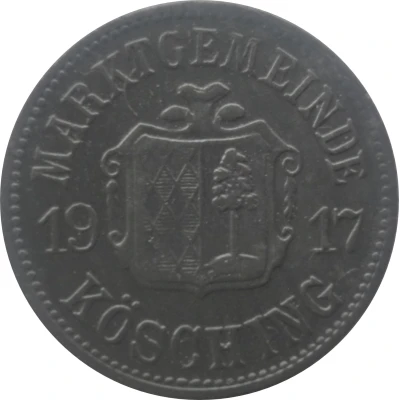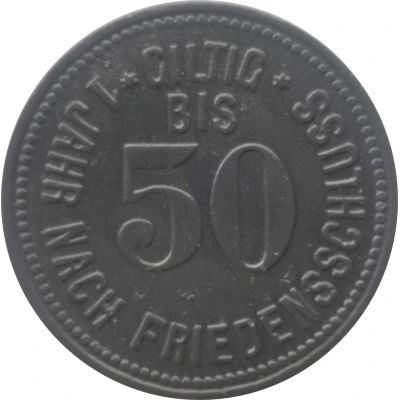


© Willem63 (CC BY-NC-SA)
50 Pfennigs - Kösching
1917 year| Zinc | 2.2 g | 22.3 mm |
| Issuer | Market Town of Kösching (Federal state of Bavaria) |
|---|---|
| Emperor | William II (Wilhelm II) (1888-1918) |
| Type | Standard circulation coin |
| Year | 1917 |
| Value | 50 Pfennigs (50 Pfennige) (0.50) |
| Currency | Mark (1914-1924) |
| Composition | Zinc |
| Weight | 2.2 g |
| Diameter | 22.3 mm |
| Thickness | 0.9 mm |
| Shape | Round |
| Technique | Milled |
| Orientation | Medal alignment ↑↑ |
| Demonetized | Yes |
| Updated | 2024-10-04 |
| Numista | N#74870 |
|---|---|
| Rarity index | 97% |
Reverse
Pearl rim, legend surrounding denomination.
Script: Latin
Lettering:
✶ GILTIG ✶
BIS
50
1 JAHR NACH FRIEDENSSCHLUSS
Edge
Plain
Comment
Issuing body: [Marktgemeinde, Bayern].Interesting fact
The 50 Pfennigs coin from Kösching, Bavaria, issued in 1917, is interesting because it was made of zinc, a material that was commonly used for coinage during World War I due to its durability and low cost, unlike other coins that were made of more valuable metals like gold, silver, or copper.